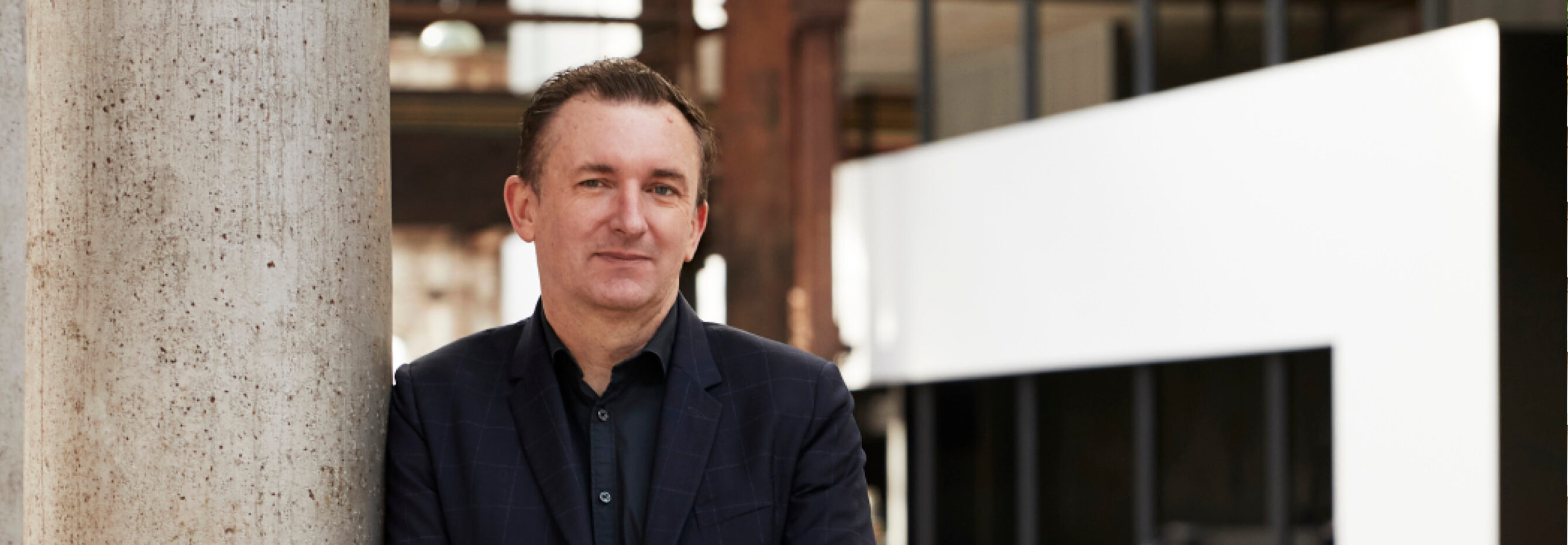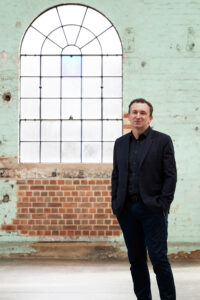Interchange meets: Blair French of Carriageworks

In this instalment of Interchange Meets, we’re very excited to chat with Blair French, CEO of the iconic Carriageworks arts precinct. For readers who find themselves in Sydney, their impressive public exhibitions and weekly farmers’ markets unite a vibrant community – a must-visit!
Blair takes a moment to share some thoughts on organisational culture, his approach to leadership and what he sees as the future of work.
Thanks for joining us Blair. Can you tell us a little about your professional background?
I began in the arts as a writer – a critic for a daily newspaper – but moved into the public gallery and museum sector quite young on a professional training program run through the Te Papa Tongarewa Museum of New Zealand project. While there I worked in the curatorial department of the then-National Art Gallery of New Zealand. I subsequently worked in curatorial and managerial roles in public galleries and cultural organisations first briefly in the UK and then from the mid-1990s in Sydney. I’ve stepped out on a couple of occasions to undertake research degrees and teach at tertiary institutions along the way too. Prior to my role at Carriageworks, I was Director, Curatorial and Digital at the Museum of Contemporary Art Australia, and earlier Executive Director, Artspace Visual Arts Centre.
What does a typical day look like for you?
At the moment I imagine it’s pretty similar to that across most sectors – lots of time spent staring into a screen checking in with colleagues and our professional partners. And when not doing that, largely working on revisions of scenario plans based on changing COVID-19 projections. As a public facility that produces and hosts an array of activities, from major arts festivals and performances through to a weekly farmers’ market, we’ve been deeply impacted by restrictions on people gathering; rethinking and remodelling how we approach our business through the pandemic is all-consuming.
The current moment aside, I’m fortunate in that my work is hugely varied. Whilst maybe 40-50% of any day or week will be people-focussed, and maybe 30-40% spent on other strategy, government and stakeholder relationship, and financial management, there is always at least 10% that remains fluid. It depends on the type of activities we’re presenting on-site and creative development of future programs. On some days our cavernous building will be largely empty and quiet, on others there might be 5000 or more people milling about outside downstairs at an art fair, festival or Fashion Week.
How do you define positive workplace culture?
A diverse array of individuals actively sharing purpose and working towards that with mutual respect and care. Creativity is critical. As in any other sector, we in the arts need to constantly work to nurture and propagate critical and creative thinking. It doesn’t simply thrive inherently. The business side of supporting arts and culture can be as mired in operational, financial and compliance matters as any other area of professional endeavour, and in its own form of political manoeuvring.
This culture and creativity come from within individuals and is often sparked through their interaction, their working together. When the creative and broader cultural purpose of the organisation remains at the forefront of all this work, you can achieve a positive workplace culture that is always respected, always prioritised.

Carriageworks CEO Blair French at the iconic site.
Photo (incl. header): Zan Wimberley
What/who has been your biggest influence in your professional life?
The people who have influenced me most significantly in the paths I’ve taken have been teachers and mentors, and three teachers in particular. The first was my high school history teacher, who introduced an understanding of history being embedded in the place we live and shaping our immediate realities – not the study of places, actions and times totally removed from us. We studied the place we lived in, the long history of habitation but in particular the complexities and the violence of its colonial history and the way in which inequities, tensions and emerging opportunities in our present day society – 1980s Aotearoa New Zealand – threaded back to this past. Studying the local so intensely opened up the broader world for me, actually.
Second, my first university art history lecturer, an inspirational teacher who in a very gentle way never accepted the first go at a piece of work, and opened my eyes to the joy of art. In his own professional and personal life, he lived the slow working-through of a bi-cultural nation – he was Māori, but he had a deep passion for European modernism. The work he undertook both in the seminar room and the wider cultural sphere working to embed principles of te ao Māori (Māori worldview) within the discipline of art history and the institutions of culture was inspirational. Finally, here in Australia my Masters and PhD supervisor just kept pushing and questioning my thinking about what matters; all of them people who broadened my way of thinking and nudged me in directions that weren’t always – in fact almost never – the easy pathways.
In your opinion, what makes a good leader?
I always begin with what might be thought of as the soft skills: empathy, listening skills, the ability to pause and support colleagues to articulate concerns but also pathways to their own solutions. Then, capacity to synthesise a diversity of views and potential paths of action. Self-reflection. Openness. Clarity of decision-making and communication. Understanding that organisational success, or that of the workplace culture, can never come solely from your vision or sense of purpose alone.
How do you approach cultural issues in your role?
First of all, listening: attempting to understand the multiple perspectives that are at play, before trying to map out a pathway. Very rarely will there be one that you can say, well that stands out as needing to be the dominant one, the most obviously appropriate one. Second, I like this idea of walking alongside those you are working with. Stepping in front to protect when necessary on occasion, or to give clarity or singularity to a shared direction, but understanding that leading is very much about recognising when to step aside, when to support from alongside or behind.
Predict the future: what does work look like for people in 2050?
I suspect that future is now rushing up to meet us more quickly than we could have ever anticipated two years ago. Over a decade ago I sat on a public discussion panel in Aotearoa New Zealand on the topic of ‘Curatorial Practice In 2050’. Very quickly the discussion both amongst the panel and from the floor focussed on Issues of environmental impact and sustainability. It was around the time that the image – somewhat clichéd – of the globetrotting curator was at its height, the individual constantly in the air between visiting artists on multiple continents and producing exhibitions from a laptop in airline lounges.
Because this business is about connecting cultures, about widening knowledge and experience about and of the world through the work of artists, performers, musicians and writers, this way of working seemed ingrained. The challenge of the evening was to think differently. And one of my colleagues on the panel – also a director of an arts institution – had actually been set the challenge by their environmentalist father to try to travel no further than 100km from their home for a year. It seemed utopian and fraught with difficulties then. But now? It’s how we’ve worked the last 18 months.
Work in 2050 will be more dispersed spatially, but less relentlessly mobile in a global sense. The challenge then, as it is now, will be in keeping connected in a purposeful but also empathetic manner.